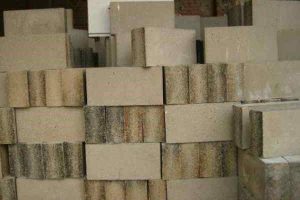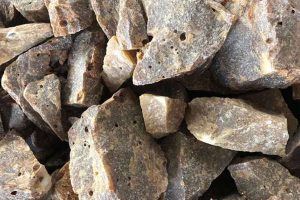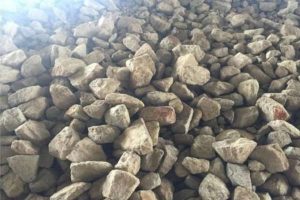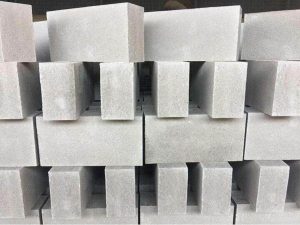Primero, Ladrillo con alto contenido de alúmina: El líder en refractarios de alta temperatura
Como líder en materiales refractarios a alta temperatura, El ladrillo con alto contenido de alúmina ocupa una posición importante en muchos campos.. Se usa ampliamente en el campo de alta temperatura con su excelente rendimiento y se ha convertido en un material indispensable en muchas producción industrial..
Los ladrillos de alúmina altos están hechos principalmente de materias primas, como alúmina alúmina y arcilla unida, de los cuales el contenido de alúmina es alto, generalmente arriba 48%. Según el contenido de alúmina diferente, Los ladrillos de alúmina altos se pueden dividir en varios grados, como grado especial, primer grado, segundo grado, tercer grado y así sucesivamente. Diferente difieren en el rendimiento y el uso, Pero todos tienen alta refractoridad, temperatura de ablandamiento de la carga, y resistencia a la escoria. Por empresa produce varios ladrillos de alta calidad de alta calidad. Contáctenos para obtener los mejores precios en ladrillos de alta alúmina.
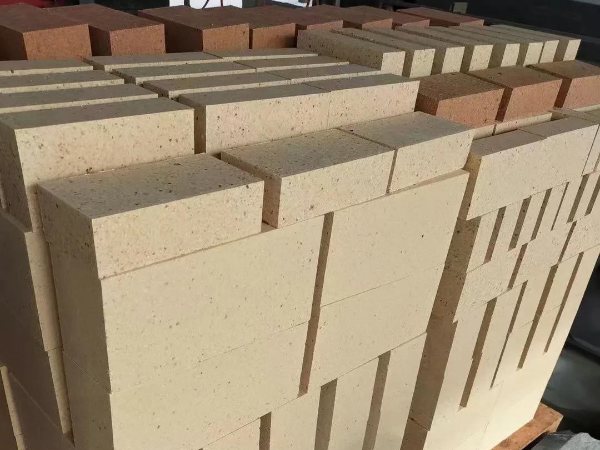
En el campo de la industria de alta temperatura, Los ladrillos de alúmina altos son ampliamente utilizados. Por ejemplo, en la industria metalúrgica, Los ladrillos de alúmina altos se usan comúnmente en el revestimiento de hornos de fundición, tales como explosiones, altos hornos, hornos eléctricos, etc.. Puede soportar altas temperaturas y corrosión química, Asegurar un proceso de fundición estable y eficiente. En la industria del hierro y el acero, Los ladrillos de alúmina altos se usan ampliamente en el revestimiento de hornos de hierro y acero, tales como explosiones, convertidores y otros equipos. Puede soportar altas temperaturas y erosión de la reacción metalúrgica, proteger la vida útil y la productividad del equipo.
En la industria química, Se utilizan ladrillos de alúmina altos en el revestimiento de hornos químicos, tanques de almacenamiento, reactores, refinadores y otros equipos. Estos equipos deben resistir la erosión de varios productos químicos y altas temperaturas durante el proceso de producción., y los ladrillos de alúmina altos pueden proporcionar protección refractaria confiable. En la industria de la energía eléctrica, Los ladrillos de alúmina altos se utilizan principalmente para el revestimiento refractario de las calderas de energía, turbinas, Chimeneas y otros equipos. Estos equipos necesitan resistir altas temperaturas y erosión de gases de combustión durante la generación de energía, y los ladrillos de alta alúmina pueden proporcionar una protección confiable para garantizar la operación segura y estable del equipo.
Además, Los ladrillos de alúmina altos se utilizan ampliamente en la construcción, vidrio, cerámica, fundición, Textiles y otras industrias. En la industria de la construcción, Se pueden usar ladrillos de alúmina altos para el revestimiento refractario de hornos de alta temperatura, ardor, muros de horno y otras instalaciones industriales, así como para el aislamiento por calor y la capa de aislamiento térmico de los edificios para mejorar el rendimiento de los edificios que ahorra energía. En la industria del vidrio, Se utiliza en el revestimiento de hornos de vidrio para garantizar la calidad de la producción de vidrio y la estabilidad del proceso.. En la industria de la cerámica, Se puede usar como el revestimiento del horno de sinterización de cerámica para mejorar el efecto de sinterización y el rendimiento de ahorro de energía. En la industria de la fundición, se puede usar como material de revestimiento del cucharón de hierro, canal, etc.. Para mejorar la eficiencia de fundición. En la industria textil, Se puede utilizar en el revestimiento refractario de conductos de aire caliente y hornos de maquinaria textil para proporcionar una fuente de calor estable.
En breve, El ladrillo de alúmina alto con su excelente rendimiento en el campo de la temperatura alta juega un papel importante, y su amplia gama de aplicaciones para muchas producción industrial proporciona una garantía confiable.
Segundo, Las características y ventajas de la alta alúmina de ladrillo
(1) Excelente rendimiento refractario
Los ladrillos de alúmina altos en el contenido de alúmina son altos, generalmente más de 48%. La alúmina es un compuesto de alta dureza, punto de fusión de 2054 ℃. Se debe a las excelentes propiedades refractarias de la alúmina, El ladrillo de alúmina alto puede soportar entornos de alta temperatura, Su temperatura refractaria puede alcanzar 1750 – 1790 ℃. Por ejemplo, En algún horno de aluminio fundido, alto horno caliente, Alto horno y otra mampostería de horno de alta temperatura, El ladrillo de alúmina alto se usa ampliamente, demostró completamente su excelente rendimiento en estabilidad de alta temperatura.
(2) Temperatura de ablandamiento de carga alta
La temperatura de ablandamiento de carga de ladrillo de alúmina alta es más alta que el ladrillo de arcilla, pero no tan alto como el ladrillo de sílice, generalmente en el 1420 ℃ – 1550 ℃. En el proceso de experimentar altas temperaturas, Los ladrillos de alúmina altos no son fáciles de deformar, capaz de soportar toda la estructura del horno. Este es uno de los indicadores más importantes de lo bueno que es un ladrillo de alúmina alto. Por ejemplo, en el alto horno de la industria del acero y el acero, Los ladrillos de alúmina altos pueden mantener la estabilidad a altas temperaturas y cargas pesadas para garantizar el funcionamiento normal del alto horno.
(3) Fuerte resistencia a la escoria
Los ladrillos de alta alúmina pueden resistir la erosión de la escoria ácida y la escoria alcalina, En algunos de los medios para el horno ácido y alcalino, Los ladrillos de alúmina altos pueden resistir la erosión de los medios ácidos o alcalinos, Para asegurarse de que el horno no sea penetrado por los medios de comunicación en el proceso de trabajo del horno. Por ejemplo, en la industria química en el horno, El ladrillo de alúmina alto puede resistir la erosión de varios productos químicos para garantizar el funcionamiento seguro del horno.
(4) Alta resistencia a la compresión
Según el contenido de alúmina diferente, La alta resistencia a la presión de ladrillo de alúmina está generalmente en el 50 – 80MPa. Es por esta alta fuerza de presión, Para garantizar la estabilidad del horno en el proceso de trabajo del horno. Por ejemplo, En el horno de fundición de la industria metalúrgica, Los ladrillos de alúmina altos pueden soportar altas temperaturas y cargas pesadas para garantizar la estabilidad del proceso de fundición.
(5) buena estabilidad y resistencia al desgaste
Los ladrillos de alúmina altos contienen una gran cantidad de Mullite, y el componente principal de Mullite también es la alúmina, Entonces, el producto hecho de la estructura de partículas es muy perfecto, lo que mejora la estabilidad de los ladrillos de alúmina altos. En el entorno de alta temperatura, Los ladrillos de alúmina altos pueden mantener la estabilidad de la pared para garantizar la seguridad laboral. Al mismo tiempo, La textura de ladrillo de alta alúmina es difícil, tiene muy buena resistencia al desgaste, En los medios de comunicación constantemente dentro y fuera del proceso puede ralentizar el grado de desgaste de la superficie, Mejorar la vida útil del horno de alta temperatura. Por ejemplo, En el horno de sinterización de la industria cerámica, Los ladrillos de alúmina altos pueden soportar altas temperaturas y fricción de material, Para garantizar que el efecto de sinterización y el rendimiento de ahorro de energía.
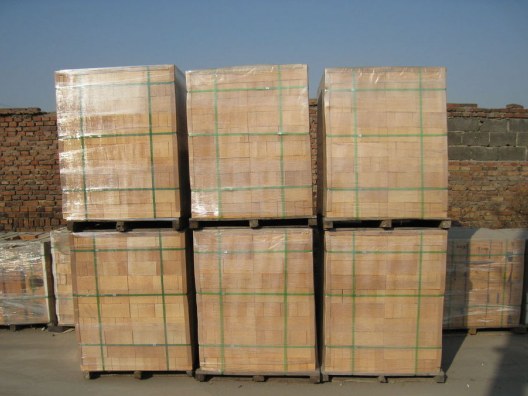
Tercero, El uso de ladrillos de aluminio alto
Los ladrillos de alta alúmina se utilizan ampliamente en una variedad de equipos de alta temperatura, desempeñando un papel vital.
En primer lugar, En la mampostería del alto horno, El ladrillo de alúmina alto con su excelente rendimiento se convierte en la opción ideal. La temperatura interna del alto horno es extremadamente alta, y está expuesto a la erosión y el fregado mecánico por el hierro fundido y la escoria. La alta refractariedad de los ladrillos de alúmina altos puede soportar el entorno de alta temperatura dentro del alto horno, y su temperatura de ablandamiento de alta carga asegura que no sean fáciles de deformarse a alta temperatura y carga pesada, que proporciona soporte para la operación estable del alto horno. Al mismo tiempo, Los ladrillos de alúmina altos tienen una fuerte resistencia a la escoria, que puede resistir efectivamente la erosión de la escoria ácida y alcalina en el alto horno y prolongar la vida útil del alto horno. Por ejemplo, para el cilindro del horno de alto horno, Se pueden usar ladrillos de alúmina altos junto con otros materiales refractarios para mejorar la resistencia a la erosión del cilindro.
En segundo lugar, El alto horno caliente también es un área de aplicación importante de ladrillo de alúmina alta. Antorno caliente en la región de temperatura media de la temperatura en 600 – 1200 ℃, La caída de la temperatura es grande, Los ladrillos refractarios de los requisitos rápidos de enfriamiento y rendimiento de calentamiento. Los ladrillos de alúmina alta de baja fluencia son excelentes en esta área, Uso de bauxita de alúmina alta de alta calidad con materias primas refractarias "tres piedras", Después de dos transformación de cristal de Mullite, La formación de la estabilidad estructural de la fase de cristal de mullita, con buena resistencia a la fluencia. En las partes de alta temperatura, como ladrillos de la red superior, Ladrillos giratorios de bóveda y grandes paredes de estufa de explosión caliente, Los ladrillos de alúmina altos se usan comúnmente para la mampostería. Según el alto horno caliente, la selección de la temperatura del aire caliente de diferentes niveles de ladrillos de alúmina altos, Cuando la temperatura del viento en 900 – 1100 ℃, La parte de alta temperatura del revestimiento del horno y el ladrillo de la red a menudo se usan ladrillos de alúmina altas, ladrillos de mullite o ladrillos de sílice.
Además, El techo del horno eléctrico también es inseparable de ladrillos de alúmina altos. El horno en la temperatura de trabajo puede ser tan alto como 1750 – 1790 ℃, Altos ladrillos de alúmina de alta refractariedad para cumplir con este requisito. los Alta refractarios de los ladrillos de alúmina altos puede cumplir con este requisito. Su fuerte resistencia a la escoria puede resistir la erosión ácida y alcalina en el horno eléctrico. Al mismo tiempo, Los ladrillos de alúmina altos tienen una alta resistencia a la compresión y pueden soportar la carga pesada del techo del horno eléctrico. Por ejemplo, Los ladrillos de alúmina altos se utilizan ampliamente en la parte superior de los hornos eléctricos de acero para garantizar la operación estable y la productividad de los hornos eléctricos.
Además, Los ladrillos de alúmina altos también se usan para el alto horno de mampostería, horno reflector, forro de horno rotativo y así sucesivamente. En el alto horno, Los ladrillos de alúmina altos pueden soportar altas temperaturas y el impacto del flujo de aire del horno. En el horno reflector, La alta refractoridad y la resistencia a la escoria de los ladrillos de alúmina altos aseguran el funcionamiento normal del horno reflector. En el revestimiento del horno rotativo, Los ladrillos de alúmina altos pueden resistir la fricción de los materiales y las altas temperaturas debido a su resistencia y estabilidad al desgaste.
Los ladrillos de alta alúmina también se usan ampliamente como ladrillos de celosía de almacenamiento de calor para hornos planos, enchufes para sistemas de vertido, ladrillos de pico de agua, etc.. En estas partes, Altos ladrillos de alúmina de alta refractariedad, La resistencia a la escoria y la resistencia a la compresión y otras ventajas de rendimiento se pueden dar juego completo a, Para el progreso suave de la producción industrial, proporciona una garantía confiable.
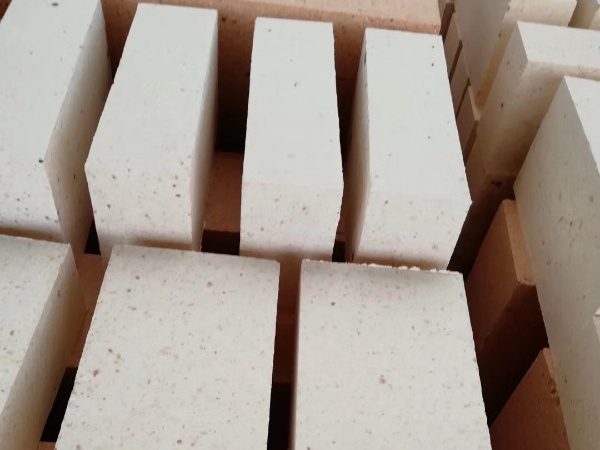
Cuatro, Alta producción y estándares de ladrillo de aluminio
(1) proceso de producción
El proceso de producción de ladrillo de alto aluminio es más complejo, Necesita pasar por varios aspectos de la buena operación.
1. Selección de materias primas
Las principales materias primas de los ladrillos alúmina altos incluyen alúmina alta alúmina Bauxite Clinker, agente vinculante y así sucesivamente. El agente de unión generalmente usa arcilla blanda como agente de unión, y su papel principal en los ingredientes es mejorar las propiedades de moldeo del lodo, y hacer que el moldeo y el secado del cuerpo tengan cierta fuerza. Generalmente hablando, La adición de polvo de arcilla en los ingredientes es generalmente 5%. Para producir ladrillos de alta alúmina de volumen estable, Se puede usar micro-polvero de alta alúmina se puede usar como agente de unión de alta alúmina. O use polvo de bauxita de alúmina y polvo de arcilla de acuerdo con una relación predeterminada con la preparación de mullita sintética como agente de unión, se puede producir sin expansión secundaria de la estabilidad del volumen de la alta alúmina de ladrillo.
2. Formación
Los ladrillos de alta alúmina generalmente están hechos de grueso, arcilla media y fina. El límite superior de las partículas gruesas suele ser 2 – 3milímetro, la adición de 40 – 50% (Para productos con forma, El límite superior de las partículas gruesas puede reducirse a 2 – 1milímetro). 1 – 0.1mm partículas intermedias para agregar 10 – 20% es apropiado. < la adición de <0.1mm El polvo fino debe controlarse en 40-50%. El aumento apropiado en el tamaño y el número de partículas gruesas puede mejorar la densidad de empaque del lodo, y fácil de moldear. Al sinterizar, La reacción secundaria de Mullite alrededor del material es más débil, Fácil de sinterizar. Sin embargo, La ampliación del tamaño de partícula también tiene ciertos límites, El tamaño máximo de partícula de 3 mm es apropiado. Para reducir la porosidad de los ladrillos de alúmina altos, Mejorar la calidad de los ladrillos de alúmina altos, debe mejorar la presión de moldeo. Para ladrillos de alúmina altos ordinarios, La presión de moldeo debe alcanzar 137MPA. La presión de moldeo de ladrillos de alta alúmina de alta densidad debe estar en el rango de 176 – 215MPa.
3. Sinterización
La temperatura de sinterización varía para diferentes grados de ladrillos de alúmina altos.. Cuando se usa el horno de llama invertido a la sinter, me califican con los ladrillos de alúmina alto, La temperatura de sinterización general es 1430-1450 ℃, El tiempo de retención es 40 h. Cuando se usa ladrillos de alúmina de alto grado II, La temperatura de sinterización es 1390-1400 ℃, El tiempo de retención es 24-32 h. Si usa el horno de túnel para los ladrillos de alúmina de alto grado de sinterización I y II, La temperatura de sinterización suele ser 1550-1560 ℃. La velocidad de calentamiento varía con diferentes materias primas y productos.. 600 ℃ Antes de la etapa de baja temperatura, La temperatura debe aumentarse lentamente, 600 – 1200 ℃ La velocidad de calentamiento puede ser un poco más rápida. 1200 ℃ a la temperatura de disparo más alta debe controlarse la velocidad de calentamiento. La etapa de enfriamiento también debe controlar la velocidad de enfriamiento. Horno de carga de palanquilla de ladrillo de alta alúmina (o coche de horno) generalmente se usa más carga plana. Para evitar el corazón negro al disparar, También se puede usar la carga lateral. Disparar con horno de llama invertido, la necesidad de ladrillos de alúmina altos con estantes. Si se dispara en un horno de túnel, La mesa del automóvil del horno se puede usar para alúmina de alúmina con almohadillas de arena, Entre cada capa de ladrillos colocaba una capa de cáscara de arroz. Para que la pila de ladrillos sea sólida, a cierta altura para tirar de una capa de ladrillo de almohadilla plana. La altura de carga de ladrillo es generalmente 650 – 1000milímetro.
(2) Normas de calidad
Los estándares de calidad de ladrillo de alta alúmina incluyen principalmente contenido de composición química y requisitos de propiedad física.
1. Contenido de composición química
El contenido de la alúmina en ladrillos de alúmina altos debería ser más que 48%, y diferentes grados de ladrillos de alúmina altos tienen requisitos específicos para el contenido de Al₂o₃. Por ejemplo, en China, El contenido de al₂o₃ en ladrillos de alúmina altos generalmente se divide en tres grados: Ⅰ – Al₂o₃ Contenido > 75%. Ⅱ y al₂o₃ contenido de 60 – 75%. Ⅲ – Al₂o₃ contenido es 48 – 60%. Al mismo tiempo, el contenido de impurezas como sio₂, Fe₂o₃, Tio₂, etc.. debe controlarse dentro de un rango determinado para garantizar el rendimiento refractario de los ladrillos de alúmina altos. Por ejemplo, 48% Materias primas de ladrillo de alta alúmina utilizando 60% clinker de alta alúmina, El contenido de hierro debe estar dentro 3.0%. 55% Materias primas de ladrillo de alta alúmina utilizando 65% clinker de alta alúmina, El contenido de hierro debe estar dentro 2.5%. 65% Materias primas de ladrillo de alta alúmina utilizando 75% clinker de alta alúmina, El contenido de hierro debe estar dentro 2.2%. 75% Materias primas de ladrillo de alta alúmina utilizando 85% clinker de alta alúmina, El contenido de hierro debe estar dentro 2.0%. 80% Materiales de ladrillo de alta alúmina utilizando 80% clinker de alta alúmina, El contenido de hierro debe estar dentro 2.0%. 80% Materia prima de ladrillo de alta alúmina usando 88% clinker de alta alúmina, El contenido de hierro debe estar dentro 1.5%.
2. Requisitos de propiedad física
(1) Densidad a Granel: debe cumplir con los requisitos estándar, generalmente entre 2.3 – 2.8 gramos/cm³.
(2) porosidad aparente: debe controlarse dentro de un rango razonable, Generalmente no más de 23%.
(3) Resistencia a la compresión a temperatura normal: debe cumplir con los requisitos de la calificación correspondiente, generalmente entre 40 – 80 MPa.
(4) Cambio de línea de rehabilitación: debe controlarse dentro de un rango razonable para garantizar la estabilidad dimensional de los ladrillos de alúmina altas a altas temperaturas.
(5) Obstinación: debe cumplir con los requisitos estándar, generalmente arriba 1750 ℃.
(6) Temperatura de ablandamiento de carga: debe cumplir con los requisitos de la calificación correspondiente, generalmente entre 1400 – 1600 ℃.
(7) Estabilidad de choque térmico: debe cumplir con los estándares correspondientes, generalmente a 1100 ℃ Tiempos de enfriamiento de agua de no menos de 10 veces.
Además, El estándar de aceptación de los ladrillos de alúmina altos también implica tolerancia dimensional y calidad de apariencia. La desviación dimensional debe estar dentro del rango especificado en el estándar, generalmente ± 1.5 mm. La planitud y la verticalidad deben estar de acuerdo con los requisitos estándar para garantizar un ajuste cercano entre los ladrillos. La superficie debe ser suave, Sin grietas, No faltaron esquinas, Sin agujeros de fusión y otros defectos, y el color debe ser uniforme, Sin diferencia de color obvia.
Por refractarios es famoso por producir refractarios de alta alúmina, ladrillos de corundum y otros productos relacionados con el ladrillo de alta alúmina. En términos de ventajas de productos, La compañía tiene un equipo técnico profesional y un equipo de producción avanzado para controlar estrictamente la calidad del producto y garantizar un rendimiento estable y confiable de los alúmenes altos de alúmina.. En términos de características de servicio, Proporciona una gama completa de soporte técnico, Desde la selección del producto hasta la instalación y el uso, Para proporcionar a los clientes asesoramiento y orientación profesional.

